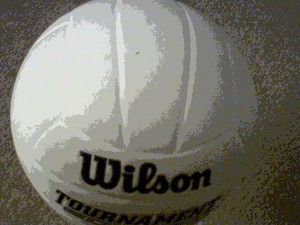You are now or soon will be coaching middle school volleyball. You applied for the job, have been asked to take the job or you’ve been pressured into the responsibility. Regardless, now what do you do with a bunch of 13-14 year olds who claim to want to play volleyball?
If you want to have a successful season, it is important to teach your players the fundamentals of playing the game of volleyball, the importance of team unity, dedication and discipline and the love for the game.
What are the fundamentals of volleyball?
Passing or Bumping the ball.
Setting the ball.
Spiking the ball.
Serving the ball.
Team unity
Dedication and discipline
Love for the game
You want to teach your players to use three passes before hitting it back over the net to the opponent. As the ball is received, the first ball should be bumped to the setter (who always takes the second pass unless unable to get to it calling out “Help”) who then sets or bumps the ball to a front row hitter (spiker) to spike the ball over the net (in hopes of scoring a point or a side out).
Passing is a major fundamental.
Everyone on the team needs to learn to pass properly. Players should have their knees bent about shoulder width apart and facing the target they wish to pass to. Demonstrate a proper platform of the arms. Place one arm out in front of you making a fist with you thumb facing the sky lying it flat over top of the index finger. Then, take your other arm and hand bringing it out in front of your body. Place the palm of this hand against the fingers of the opposite hand wrapping your fingers around the fist. Straighten your arms, making a flat surface to bump the ball. This is the platform for which players should pass. Teach players to use their legs to pass and not to swing their arms when bumping the ball. Passing drills should be an important and timely part of practice.
Setting the ball is fundamental.
Chances are, you will use two setters in a 4-2 formation. Your setter should have soft hands and a natural desire to lead and hustle. As mentioned, the setter owns the second pass. The rest of the players on the court must be aware and understand that the setter should always take the second pass, unless he or she cannot get to it. In this case, the setter should call out “Help!” to let the other players know that it is their job to take the second ball.
Teaching a player to set may seem difficult if you are not a setter your self. Ask your setters to take both hands holding their thumb, pointer and middle fingers up only, tucking the others under. Ask them to put the fingers together making a triangle. Setters should be taught that these are the main fingers used to set a ball. Next, take that triangle and bring your arms up over the top of your forehead. Emphasize that elbows should be facing out. Pump your arms and wrists up and down over the top of your forehead. Your players will start to feel a burn in their arms after a few reps. This is a good sign and their arms will get stronger with repetition. The three fingers on each hand should be used the most during a set, but because the players will likely have small hands, they will probably need to keep all of their fingers on the ball during a set for more balance and control. Emphasize again that the legs are an important part of a set just as much as the arms. Just as passing drills should be a part of practice, so should setting drills. All players should learn the fundamentals of setting the volleyball. However, you can provide the setters with specific drills for them to practice and implement during practice as they improve.
Spiking and serving the ball is fundamental.
If you want to score, you want to teach your players how to put the ball down. Most important is the approach to a spike. The spiker should use the proper approach, know when to approach the ball and how to swing their arms for maximum force. Players should attack the ball with intensity, but learn how to control a swing. Teach your players the proper technique for swinging. Swing (follow) through the volleyball at contact and snap the wrist. When running drills in practice with players, spikers will get more reps when you can toss the ball to them. Once warmed up, you will want to bring in your setters to set to the spikers. Naturally, the sets will be less accurate than a perfect toss you give them during a drill. Serving can be similar to a spike because the same sling shot arm form is used in an over head serve. Players must first learn the importance of a good toss and footwork in approaching a serve. For beginners an under hand serve may make more sense to start. This also requires less arm strength than an over head serve. Devote time during practice for your squad to divide on both sides of the net to serve back and forth to each other.
Team unity is fundamental.
Although six individuals are on the court at one time, they are indeed a team unit. Stress the importance of the team as a whole. Players need to understand how important communication can be when playing in a match. Allow time to get your players together to come up with and practice calls. For example, the team should know that when a setter can’t get to the ball, she will call out “Help!” or a player who intends to pass a ball should yell out “Mine” to let everyone else know that the ball is taken. Communication can make or break a team. It is important to implement these calls early so that players become accustomed to using them.
Dedication and discipline are fundamental.
It’s imperative that coaching a young group of individuals is a positive experience for both you and them. If you teach your players to come to practice as scheduled, to be on time and to dedicate that time to volleyball, they will see positive results. As the coach, it is your responsibility to provide an environment that encourages hard work, reward and fun. You want your players to want to come to practice to prepare for the approaching match. You can create that environment by committing to the team, the players individually and varying practices with different drills. By demanding the dedication from your players, they will learn the impact that it has on their team and in their individual lives.
Loving the game is fundamental.
If you show your genuine passion for the game, you will likely influence your players to have that same enthusiasm. Encourage them to have fun at practice. There is a time to be serious, but there can also be time for laughter. Remember, these are young kids. They are there for competition, but also for socialization.
There are many other factors when coaching middle school volleyball. You will undoubtedly run into angry parents, scheduling problems, assistant coaches, funding issues and uniform malfunctions. Always expect the unexpected. Be honest, disciplined and dedicated to these young individuals and most will appreciate what you are setting out to do as the volleyball coach.






